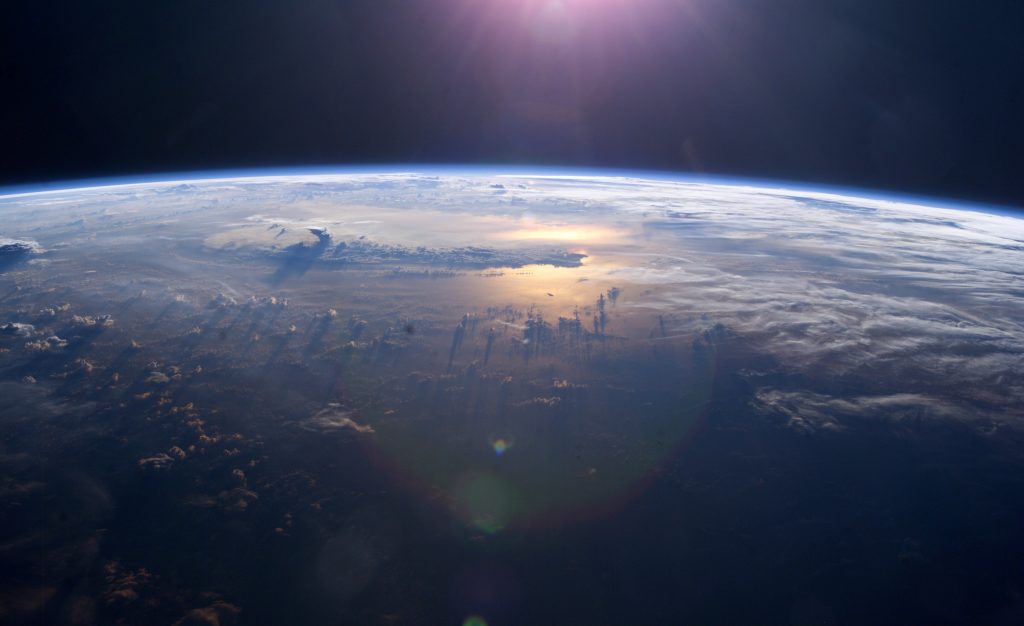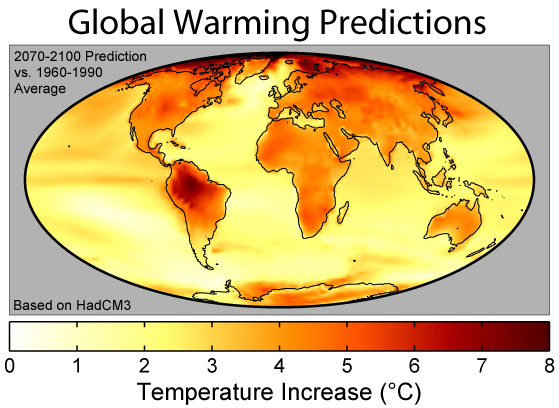
View of Earth from space. Photo from Wikimedia Commons.
Did you know that the ocean is predicted to warm over 4°C the next 100 years? There’s certainly more than meets the eye when it comes to understanding the effects of global warming, and knowing how ecosystems change in response to changes in temperature can help make our efforts more focused and accurate.
As a recent PhD graduate from the University of British Columbia, Dr. Joey Bernhardt is already making waves in the science community. Her most recent paper describes the use of phytoplankton to analyze growth rates among species under different temperature conditions. Most of the study’s work actually occurred just last September, and we were lucky enough to be able to meet Dr. Bernhardt to explore the bigger picture issues she’s addressing.
What’s so special about phytoplankton?

Green swirls of phytoplankton in the Baltic Sea. Photo from Wikimedia Commons.
To debunk a common misconception: not all of the oxygen we breathe comes from trees. In reality, nearly 50% of the world’s oxygen supply is produced by phytoplankton. What’s more, phytoplankton serve as the basis of marine food webs, so it’s no surprise that they were the main subjects used in Dr. Bernhardt’s study. These remarkable organisms can actually help us make predictions about species populations in the context of global warming.
What issues are being addressed?

2070-2100 global warming predictions map. Photo from Wikimedia Commons.
One of the most pressing issues in our global warming narrative surrounds how temperature changes affect species population. While it’s easy to measure population growth rates in the controlled conditions of a lab, Dr. Bernhardt explores whether we can apply these results to the unpredictable, fluctuating temperatures of the outdoor environment.
If we were to disregard the fact that in nature temperatures fluctuate, we will ultimately make inaccurate population predictions. To generate a more realistic sample, Dr. Bernhardt collected phytoplankton off the coast of Vancouver Island and placed them in lab incubators that mimic a natural environment using a variety of temperature settings.
To gain a better understanding of the methodology behind Dr. Bernhardt’s study, check out our video:
Why should I care?
When a species find themselves in an environment outside of their normal temperature range, they will either die off or relocate to more habitable areas. This now presents an entirely new problem since it’s not always easy for the communities that rely on these populations to pack up and move as well. From an economic standpoint, there are whole industries built upon the reliance that these populations will return, year after year.
The Future of Global Economic and Climate Change Issues
These experiments allow us to see the range of temperatures at which a species can persist. We can then pair this with the knowledge of how temperatures around the globe will shift over time in order to build more sustainable communities.
We take a deeper look into the applications of this technology in our podcast:
Group 213-5: Danny Israel, Christy Lau, Christina Rayos
